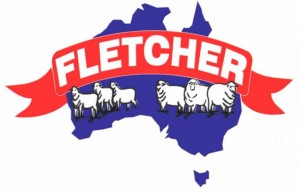 Major sheep processor Fletcher International has returned to fellmongering in earnest as skin prices remain low.
Major sheep processor Fletcher International has returned to fellmongering in earnest as skin prices remain low.
With demand for Australian mutton and lamb remaining strong, but skins values more than halving in the past 12 months, the company is one of the few processors able to adapt by fellmongering at plants in Dubbo in NSW and Albany in WA.
Thomas Foods International does some fellmongering of skins with wool longer than five centimetres at Wollangarra in Queensland, but Fletcher International’s sheep skin and wool trading manager Gerald Webster said the company’s WA and NSW equipment has been brought back into fulltime operation this year.
Fellmongering has traditionally involved the treatment of green skins with chemicals to cause the wool follicles to release the fibre for removal and the skin is then either available for tanning or, as is the case with Fletcher International, for incorporation into meat meal.
Fletcher turning skins into wool and meat meal
The Fletcher process uses an acetate process which with humidity and temperature causes the wool follicles to release naturally in 16-20 hours, Mr Webster said. The wool is removed and the skin is then shredded and put into a batch cooker as part of the meat meal process.
“It is certainly better than putting the skins in a bin.
“The wool is then dried, classed, baled up and tested for sale.”
Dubbo and Albany plants re-started
Mr Webster said the Dubbo fellmongering plant was built more than 20 years ago, was used fulltime until about five years ago and sporadically since then. The Albany equipment had also been shut down.
The Dubbo fellmongering plant has been going fulltime since March this year, doing about 15,000 skins a week, and the Albany plant is processing about 5000 skins a week.
Mr Webster said there was little expectation that the skin market would recover in the short term.
“The shoe-lining market really dictates it for sheep skins.
“That is, wool on tanned skins that are cut back to 8-10 millimetres and used for lining winter boots in cold countries in Europe and Russia.”
Rising costs to tip some skins and prohibitive dumping costs are also factors in re-starting the fellmongering plants.
“Finding markets for those inferior (skins) products is a problem.”
China issues are the biggest obstacle
Mr Webster said import trading restrictions on skins into China was the biggest obstacle.
“Up until 12 months ago China was taking probably 90 per cent of Australia’s sheep skins.”
Mr Webster said there were shorter wool sheep skins that the company still salted and sold to tanneries around the world, but the market has dropped.
“Those woolly skins that were going to China before in salted state were clipped back, they would get the wool return and then they would sell a shoe lining for $3-$4 a square foot.
“Now they are flat out selling them, let alone getting a good price.”
Mr Webster said Russia was the single biggest end user of sheepskin shoe lining material. Effluent issues with major Chinese skin processing factories had also impacted on the skin market.



HAVE YOUR SAY